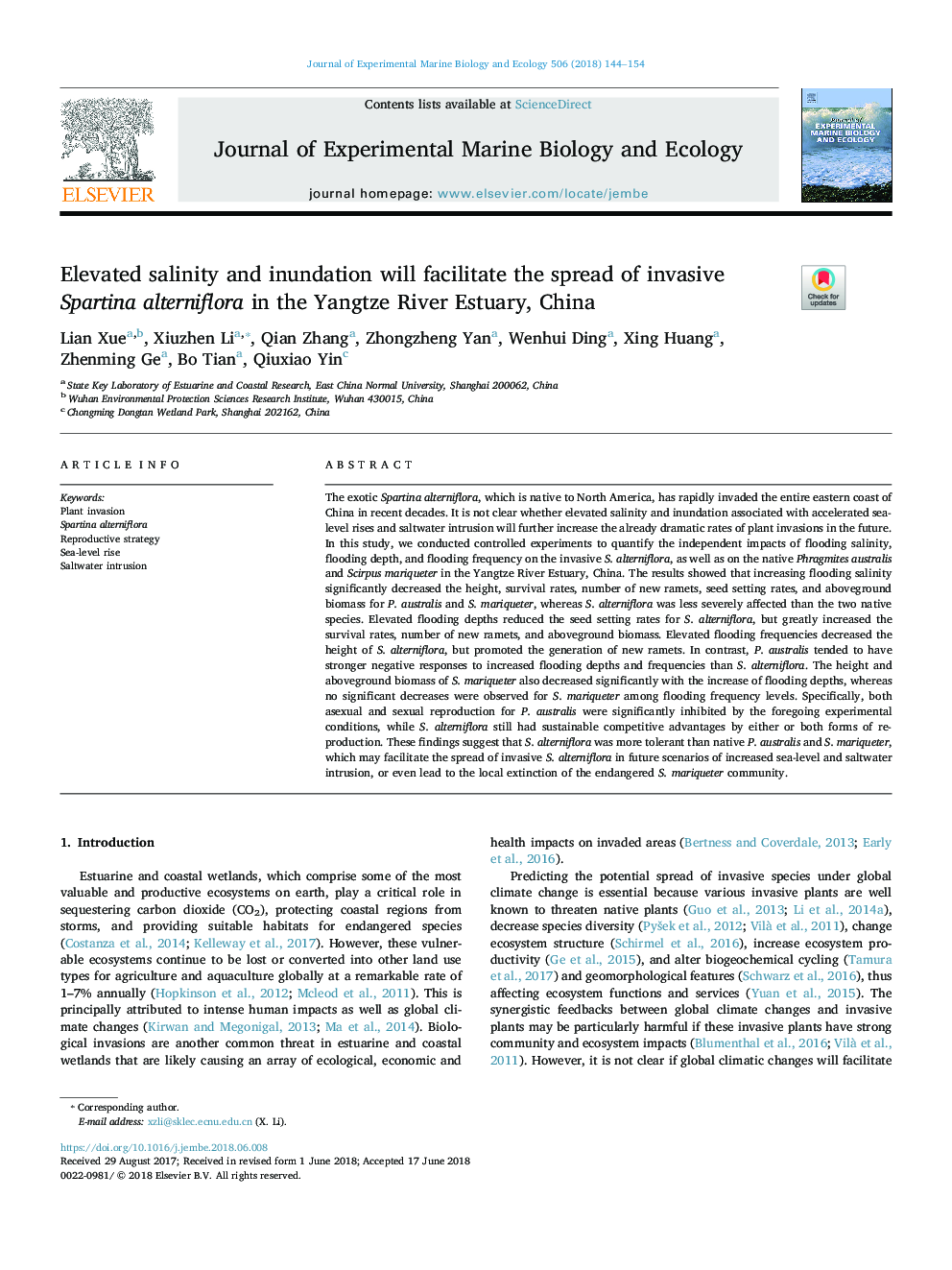| Article ID | Journal | Published Year | Pages | File Type |
|---|---|---|---|---|
| 8848894 | Journal of Experimental Marine Biology and Ecology | 2018 | 11 Pages |
Abstract
The exotic Spartina alterniflora, which is native to North America, has rapidly invaded the entire eastern coast of China in recent decades. It is not clear whether elevated salinity and inundation associated with accelerated sea-level rises and saltwater intrusion will further increase the already dramatic rates of plant invasions in the future. In this study, we conducted controlled experiments to quantify the independent impacts of flooding salinity, flooding depth, and flooding frequency on the invasive S. alterniflora, as well as on the native Phragmites australis and Scirpus mariqueter in the Yangtze River Estuary, China. The results showed that increasing flooding salinity significantly decreased the height, survival rates, number of new ramets, seed setting rates, and aboveground biomass for P. australis and S. mariqueter, whereas S. alterniflora was less severely affected than the two native species. Elevated flooding depths reduced the seed setting rates for S. alterniflora, but greatly increased the survival rates, number of new ramets, and aboveground biomass. Elevated flooding frequencies decreased the height of S. alterniflora, but promoted the generation of new ramets. In contrast, P. australis tended to have stronger negative responses to increased flooding depths and frequencies than S. alterniflora. The height and aboveground biomass of S. mariqueter also decreased significantly with the increase of flooding depths, whereas no significant decreases were observed for S. mariqueter among flooding frequency levels. Specifically, both asexual and sexual reproduction for P. australis were significantly inhibited by the foregoing experimental conditions, while S. alterniflora still had sustainable competitive advantages by either or both forms of reproduction. These findings suggest that S. alterniflora was more tolerant than native P. australis and S. mariqueter, which may facilitate the spread of invasive S. alterniflora in future scenarios of increased sea-level and saltwater intrusion, or even lead to the local extinction of the endangered S. mariqueter community.
Related Topics
Life Sciences
Agricultural and Biological Sciences
Aquatic Science
Authors
Lian Xue, Xiuzhen Li, Qian Zhang, Zhongzheng Yan, Wenhui Ding, Xing Huang, Zhenming Ge, Bo Tian, Qiuxiao Yin,
